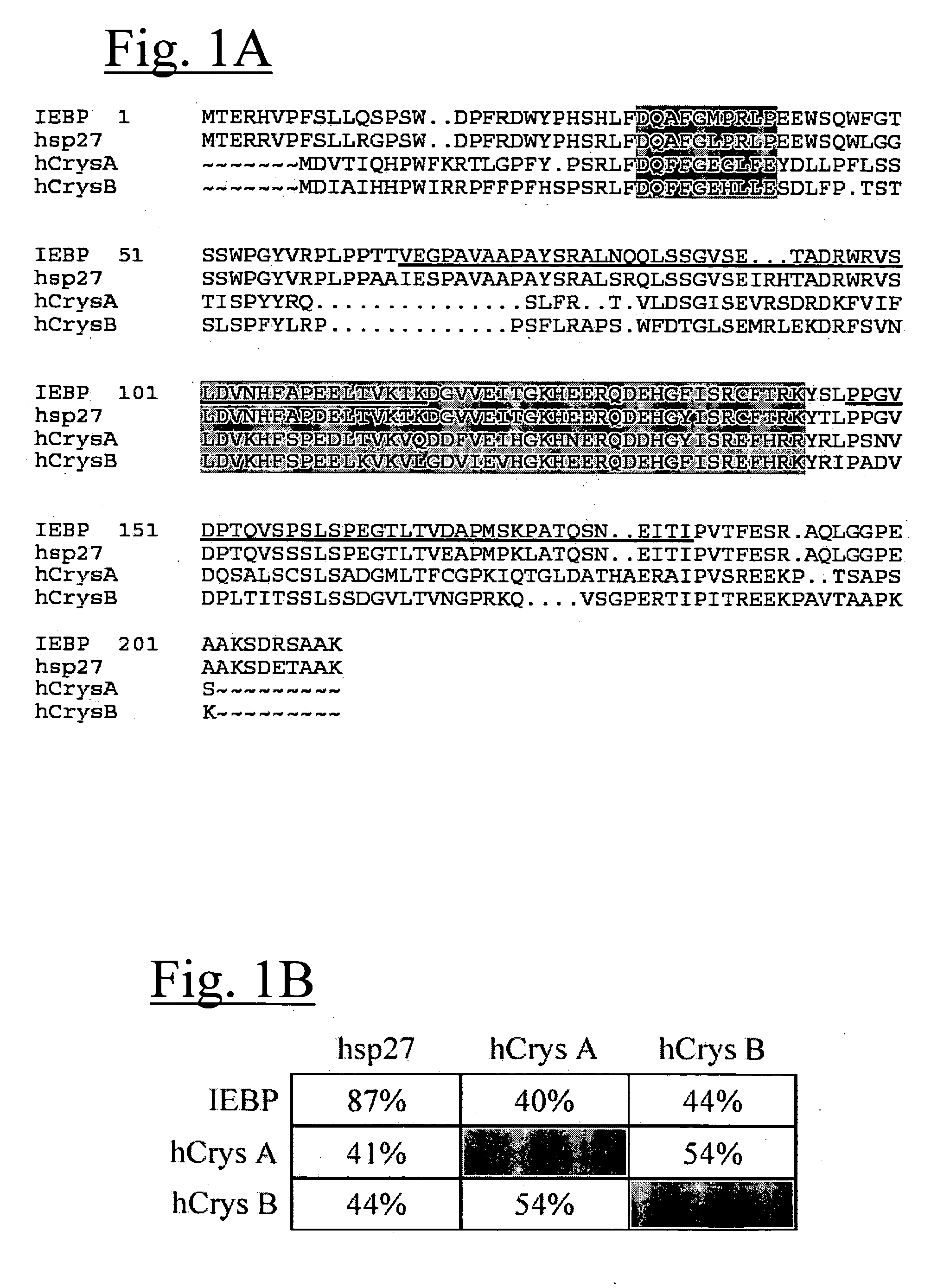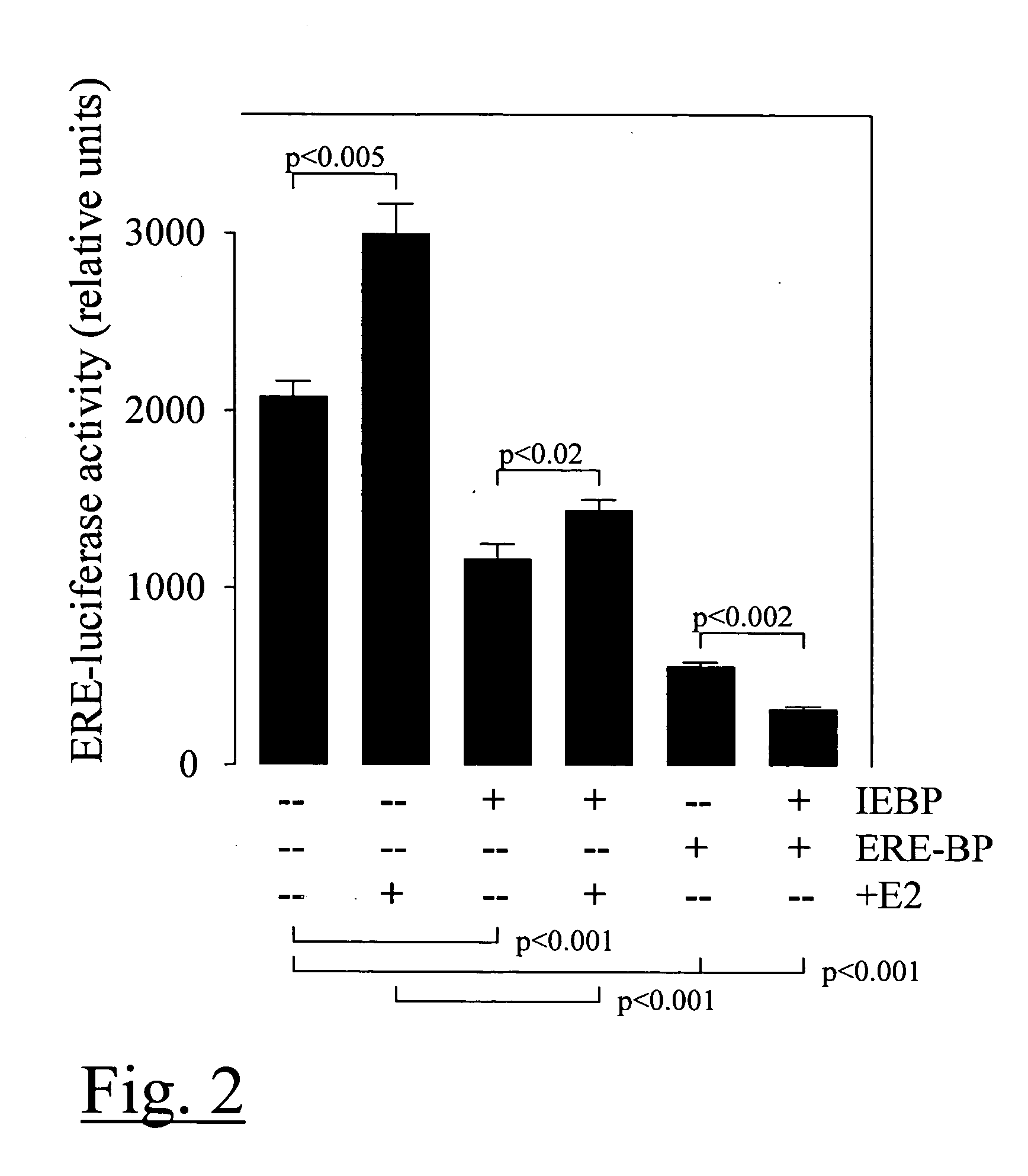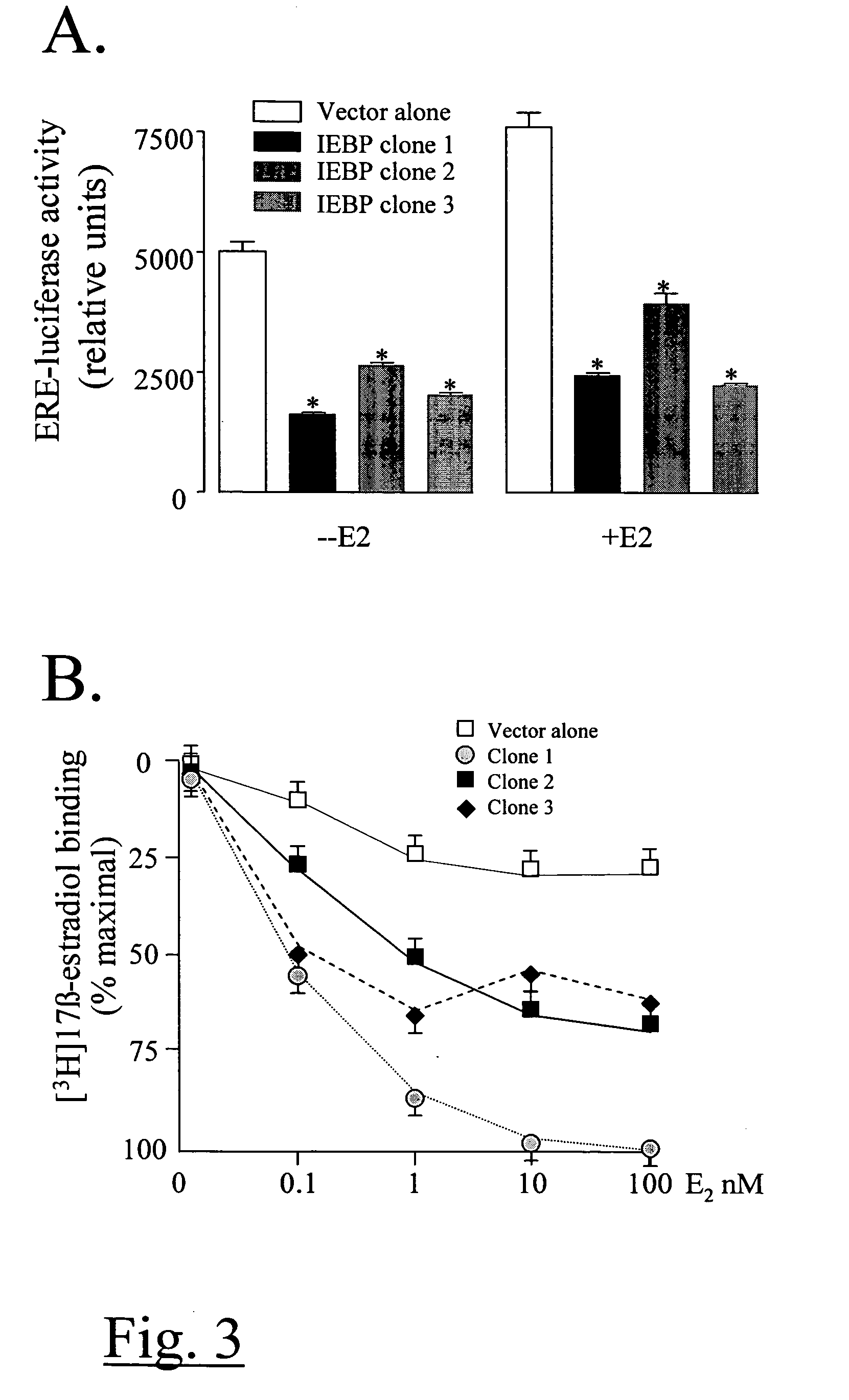Intracellular estradiol binding protein, a polynucleotide encoding the same and cell lines overexpressing the same
a technology of estradiol and binding protein, which is applied in the direction of peptides, cardiovascular disorders, drug compositions, etc., can solve the problems of increased risk of endometrial cancer, sarcoma, and cancer of the uterine lining, and achieves the inhibition of estrogen signaling, enhancing its expression or signaling, and increasing the level of iebp
- Summary
- Abstract
- Description
- Claims
- Application Information
AI Technical Summary
Benefits of technology
Problems solved by technology
Method used
Image
Examples
example 1
Cell Culture
[0085] All cell lines were obtained from American Type Culture Collection (ATCC; Rockville, Md.). The estrogen-resistant NWP cell line B95-8, derived from the hormone resistant common marmoset (Callithrix jacchus), was maintained in RPMI-1640 medium. The estrogen-responsive OWP breast cell line 6299, derived from a rhesus monkey (Macaca mulatta), was maintained in DMEM (Irvine Scientific Irvine; Calif.). All cultures were routinely supplemented with 10% fetal calf serum (FCSI, Gemini Bioproducts; Calabasas, Calif.), 100 units / ml penicillin, 100 μg / ml streptomycin, 2 mM L-glutamine (both from GIBCO-BRL; Grand Island, N.Y.) and in atmosphere of 95% air, 5% CO2. In some experiments, confluent cultures were preincubated for up to 48 hours in medium containing E2 (10 nM) prior to harvest and preparation of extracts.
example 2
Preparation of Cellular Extracts
[0086] Postnuclear extracts of each cell line were prepared as described in Chen et al., “Vitamin D and Gonadal Steroid-Resistant New World Primate Cells Express an Intracellular Protein Which Competes with the Estrogen Receptor for Binding to Estrogen Response Element,”J Clin Invest, 99: 669-675 (1997). Harvested cells were washed twice in ice-cold phosphate-buffered saline (PBS) and twice washed with ETD buffer (1 mM EDTA, 10 mM Tris-HCL, 5 mM dithiothreitol (pH 7.4)) containing 1 mM phenylmethylsulfonylflouride (PMSF). The cell pellets were then resuspended in ETD buffer and homogenized on ice in five 10-second bursts. Nuclei, with associated nuclear steroid receptor proteins, were pelleted at 10,000×g for 30 min at 4° C.
example 3
Molecular Cloning of the IEBP by Rapid Amplification of Complementary Ends (RACE)
[0087] In previous studies, the inventors identified and characterized tryptic fragments of an E2-affinity column purified protein which corresponded to the putative IEBP in NWP B95-8 cells. Chen, et al., “Purification and Characterization of a Novel Intracellular 17β-Estradiol Binding Protein in Estrogen-Resistant New World Primate Cells,”J. Clin. Endocrinol. Metab., 88: 501-504 (2003). To clone the mRNA corresponding to this protein they used degenerate oligonucleotides corresponding to the amino acid sequence of tryptic peptides to carry out RACE generation of candidate cDNA. Sequence analysis of the resulting deduced amino acid sequence for IEBP (FIG. 1A) revealed 87% sequence identity to the human hsp27, 40% sequence identity to human α-crystallin chain A and 44% sequence identity to chain B (FIG. 1B). The amino-acid sequence also exhibited 28-38% identity with a 21 amino-acid overlap in the ligan...
PUM
| Property | Measurement | Unit |
|---|---|---|
| Composition | aaaaa | aaaaa |
Abstract
Description
Claims
Application Information
 Login to View More
Login to View More - R&D
- Intellectual Property
- Life Sciences
- Materials
- Tech Scout
- Unparalleled Data Quality
- Higher Quality Content
- 60% Fewer Hallucinations
Browse by: Latest US Patents, China's latest patents, Technical Efficacy Thesaurus, Application Domain, Technology Topic, Popular Technical Reports.
© 2025 PatSnap. All rights reserved.Legal|Privacy policy|Modern Slavery Act Transparency Statement|Sitemap|About US| Contact US: help@patsnap.com



